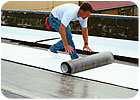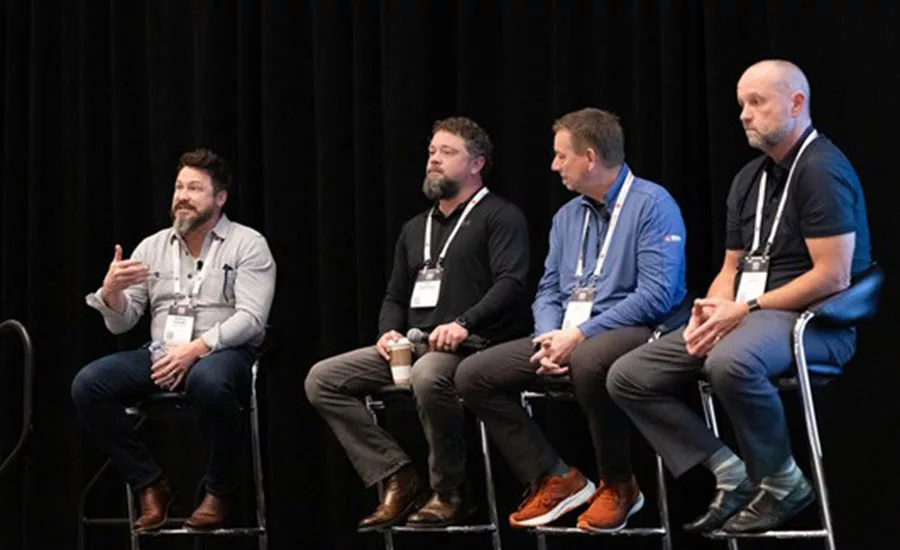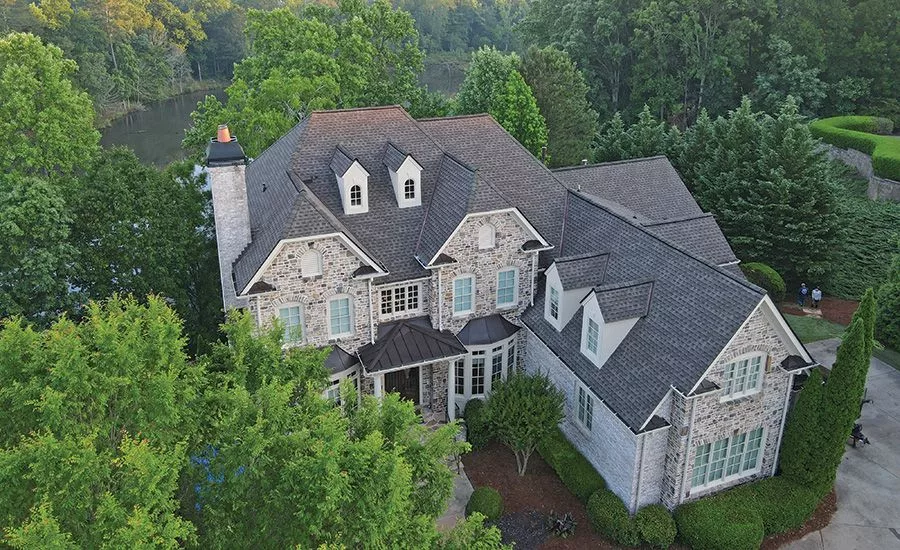Technical Details: Proper Application of Low-Slope Roof Systems
The successful construction of a low-slope roof system requires adherence to proper application methods. A roofing contractor can enhance the probability of success by administering assurance methods that can be followed by project managers (foremen, superintendents, etc.). There are certain criteria that are required for the proper application of all low-slope roof systems. Best practice methods can be employed to ensure that these application methods are followed on a continual basis throughout the course of the project.

The successful construction of a low-slope roof system requires adherence to proper application methods. A roofing contractor can enhance the probability of success by administering assurance methods that can be followed by project managers (foremen, superintendents, etc.). There are certain criteria that are required for the proper application of all low-slope roof systems. Best practice methods can be employed to ensure that these application methods are followed on a continual basis throughout the course of the project.
The most important element is to ensure that the weather is suitable for the material application. The current materials and systems are much more temperature sensitive than the old conventional systems. Successful applications require that materials be applied in ambient temperature conditions that are suitable to the material. Most adhesive-applied systems require that the ambient outside temperature is above 40°F and there should be no chance of precipitation within 24 hours of application. Material curing times vary depending on temperature and humidity levels, and the project manager must be aware of the material’s approved temperature range prior to application.

In insulated systems, the proper application of insulation is required. The insulation boards should be set with staggered joints and offset if more than one layer is being applied. The insulation boards should also be firmly butted together. Gaps in insulation boards contribute to blistering and ridging (picture framing) in most low-slope systems. The proper attachment of the insulation boards is also critical to the success of the system. The insulation should be set in the proper amount of adhesive or bitumen on adhered systems. The proper amount and type of fasteners should be applied on metal decks. Proper application of adhesive or fasteners should be verified prior to the installation of the membrane.
The membrane application should be completed in accordance with the manufacturer’s latest printed requirements. The contractor should make certain the proper amounts of materials are applied for hot, cold or mechanically attached systems. On adhesive applied systems, this would require the proper rate of adhesive per square. On hot applied systems, it is necessary to ensure that the bitumen is within the proper application temperature range and that it is applied in the proper application amount. On all adhered systems - hot, cold or torched - it is critical that the membrane is applied in a flat condition with no wrinkles or fish mouths. The membrane application should begin at the lowest point of the area (drain) and should be installed so that the side laps and end laps are not bucking water.
The roof system should be watertight at the end of each workday. On remedial projects, this requires that the contractor only remove and apply materials that can be accurately covered in the same work period. This includes application of flashings at all vertical surfaces and penetrations. The contractor must also provide sufficient water cutoffs at insertions of new and old (or incomplete) roof areas. The intent of the water cutoffs is to prevent moisture from entering the facility and the newly installed roof system. If moisture does enter the system, all wet materials must be removed and replaced.
Once the membrane application has been properly completed, surfacing and metal terminations are required. Surfacing materials typically consist of coatings or aggregates. When aggregate is applied, it should be evenly distributed and at the specified rates throughout the roof surface. Coatings should also be evenly applied at specified rates. It is the contractor’s responsibility to apply coatings at the proper intervals (coatings should be applied after 30 days on hot systems) and in conjunction with other required (emulsions) materials. The application of metal coverings requires proper fastening (with the correct fasteners installed at the specified rate) and proper metal materials.
Prior to project completion, the contractors should conduct their own walk-through to ensure that all of the work has been completed. The primary areas of concern should be at all vulnerable locations, including vertical transitions and penetrations. The contractor should make certain these areas are properly completed prior to leaving the job. Most roof leaks (nearly 80 percent) occur in these areas, and since callbacks can be costly, it is beneficial to ensure these areas are properly completed. Contractors should also make every effort to protect their work from damage incurred by members of other trades. This can be accomplished by applying walk pads at roof entry points and around all serviceable mechanical equipment. Members of each trade should be responsible for their own work area.
Contractors can ensure more successful projects by providing their own management assurance. If the crew understands that management is providing on-site assurance methods, the level of workmanship will increase. When this type of assurance is implemented, callbacks will decrease and eventually the bottom line will increase.

The successful construction of a low-slope roof system requires adherence to proper application methods. A roofing contractor can enhance the probability of success by administering assurance methods that can be followed by project managers (foremen, superintendents, etc.). There are certain criteria that are required for the proper application of all low-slope roof systems. Best practice methods can be employed to ensure that these application methods are followed on a continual basis throughout the course of the project.
The most important element is to ensure that the weather is suitable for the material application. The current materials and systems are much more temperature sensitive than the old conventional systems. Successful applications require that materials be applied in ambient temperature conditions that are suitable to the material. Most adhesive-applied systems require that the ambient outside temperature is above 40°F and there should be no chance of precipitation within 24 hours of application. Material curing times vary depending on temperature and humidity levels, and the project manager must be aware of the material’s approved temperature range prior to application.

Key Components
The condition of the deck (substrate) is also critical for both new construction and remedial projects. The deck must be properly secured to the structural components and free of any irregularities or deficiencies. This would include excessive rust or corrosion on metal decks and cracks or honeycombs in concrete decks. The deck must also be dry and free of loose dirt and contaminants. A thorough examination of the deck is required prior to installation to determine if it is properly suited for the application.In insulated systems, the proper application of insulation is required. The insulation boards should be set with staggered joints and offset if more than one layer is being applied. The insulation boards should also be firmly butted together. Gaps in insulation boards contribute to blistering and ridging (picture framing) in most low-slope systems. The proper attachment of the insulation boards is also critical to the success of the system. The insulation should be set in the proper amount of adhesive or bitumen on adhered systems. The proper amount and type of fasteners should be applied on metal decks. Proper application of adhesive or fasteners should be verified prior to the installation of the membrane.
The membrane application should be completed in accordance with the manufacturer’s latest printed requirements. The contractor should make certain the proper amounts of materials are applied for hot, cold or mechanically attached systems. On adhesive applied systems, this would require the proper rate of adhesive per square. On hot applied systems, it is necessary to ensure that the bitumen is within the proper application temperature range and that it is applied in the proper application amount. On all adhered systems - hot, cold or torched - it is critical that the membrane is applied in a flat condition with no wrinkles or fish mouths. The membrane application should begin at the lowest point of the area (drain) and should be installed so that the side laps and end laps are not bucking water.
The roof system should be watertight at the end of each workday. On remedial projects, this requires that the contractor only remove and apply materials that can be accurately covered in the same work period. This includes application of flashings at all vertical surfaces and penetrations. The contractor must also provide sufficient water cutoffs at insertions of new and old (or incomplete) roof areas. The intent of the water cutoffs is to prevent moisture from entering the facility and the newly installed roof system. If moisture does enter the system, all wet materials must be removed and replaced.
Once the membrane application has been properly completed, surfacing and metal terminations are required. Surfacing materials typically consist of coatings or aggregates. When aggregate is applied, it should be evenly distributed and at the specified rates throughout the roof surface. Coatings should also be evenly applied at specified rates. It is the contractor’s responsibility to apply coatings at the proper intervals (coatings should be applied after 30 days on hot systems) and in conjunction with other required (emulsions) materials. The application of metal coverings requires proper fastening (with the correct fasteners installed at the specified rate) and proper metal materials.
Prior to project completion, the contractors should conduct their own walk-through to ensure that all of the work has been completed. The primary areas of concern should be at all vulnerable locations, including vertical transitions and penetrations. The contractor should make certain these areas are properly completed prior to leaving the job. Most roof leaks (nearly 80 percent) occur in these areas, and since callbacks can be costly, it is beneficial to ensure these areas are properly completed. Contractors should also make every effort to protect their work from damage incurred by members of other trades. This can be accomplished by applying walk pads at roof entry points and around all serviceable mechanical equipment. Members of each trade should be responsible for their own work area.
Contractors can ensure more successful projects by providing their own management assurance. If the crew understands that management is providing on-site assurance methods, the level of workmanship will increase. When this type of assurance is implemented, callbacks will decrease and eventually the bottom line will increase.
Looking for a reprint of this article?
From high-res PDFs to custom plaques, order your copy today!



